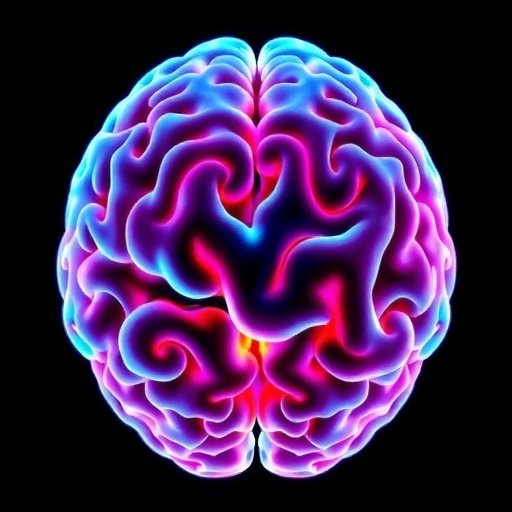Quantitative Susceptibility Mapping Unveils Altered Brain Iron Levels in Children with Autism Spectrum Disorder
In a groundbreaking study recently published in BMC Psychiatry, researchers have revealed significant alterations in brain iron content among children diagnosed with autism spectrum disorder (ASD). Utilizing state-of-the-art quantitative susceptibility mapping (QSM), a cutting-edge magnetic resonance imaging (MRI) technique, the investigation provides the first comprehensive whole-brain analysis comparing iron distribution in ASD children to their typically developing (TD) peers. This fresh insight promises to deepen our understanding of ASD’s neurobiological underpinnings and may herald new diagnostic and therapeutic avenues.
Iron is a crucial element in the human brain, playing vital roles in myelination, neurotransmitter synthesis, and overall neural metabolism. Previous studies have highlighted iron deficiency in certain brain regions of individuals with ASD, but these investigations often relied on manually segmented regions of interest (ROIs), leaving the broader iron distribution landscape unexplored. Here, Xu, Li, Lan, and colleagues leveraged QSM’s capacity to measure magnetic susceptibility—a proxy for iron content—with high spatial resolution across the entire brain, allowing an unbiased, holistic assessment.
The study cohort comprised 30 children diagnosed with ASD alongside 28 typically developing controls matched precisely for age and sex. Each participant underwent advanced MRI protocols tailored to QSM acquisition, enabling researchers to generate detailed susceptibility maps of brain iron deposition. By comparing regional susceptibility values across groups, the team identified areas exhibiting statistically significant differences, thereby illustrating iron content variations associated with ASD pathology.
A striking pattern emerged from the analysis: ASD children showed elevated susceptibility values—and thus presumably higher iron concentrations—in multiple cortical areas, including bilateral middle temporal gyri, left inferior temporal and parietal gyri, right lateral occipital gyrus, right insula, and bilateral rostral anterior cingulate gyri. Intriguingly, these regions are implicated in functions frequently disrupted in ASD, such as social cognition, sensory processing, and emotional regulation, hinting at a potential mechanistic link between iron dysregulation and clinical symptoms.
Conversely, a contrasting decrease in susceptibility was observed in the right cerebral white matter among ASD participants, suggesting region-specific iron deficiencies or altered iron homeostasis in subcortical pathways. White matter integrity is critical for efficient neural connectivity and communication, both of which are often compromised in ASD, raising the possibility that iron content anomalies contribute to these neurodevelopmental disruptions.
Beyond group comparisons, the study probed correlations between iron levels and behavioral metrics. Specifically, susceptibility values in the left middle temporal gyrus, left inferior parietal gyrus, and right lateral occipital gyrus inversely correlated with gross motor scores on the Gesell Developmental Schedules (GDS) within the ASD cohort. This finding intimates that aberrant iron accumulation in these cortical areas may contribute to impaired motor function, a common yet underexplored facet of autism.
Technical excellence underpins these findings. QSM, the imaging modality employed in this study, capitalizes on the magnetic properties of tissue influenced primarily by paramagnetic substances such as iron. By quantifying distortions in the magnetic field caused by iron deposits, QSM images can provide both qualitative and quantitative assessments of brain iron distribution, offering superior specificity compared to traditional MRI techniques. This precision enables detection of subtle iron abnormalities that might otherwise be obscured.
The implications of this research extend far beyond diagnostic imaging. Iron dysregulation in autism could reflect fundamental disruptions in neurodevelopmental pathways, including oxidative stress cascades, mitochondrial dysfunction, and inflammatory processes. These factors are increasingly implicated in ASD pathophysiology, suggesting that brain iron levels might serve not only as biomarkers but also as potential therapeutic targets.
Furthermore, the altered iron profiles highlight the heterogeneity within ASD. Identifying distinct neurobiological signatures tied to clinical features can facilitate personalized medicine approaches, tailoring interventions based on underlying brain chemistry. For example, iron supplementation or chelation might be viable strategies to rectify regional imbalances, provided that further studies confirm causality and safety.
This whole-brain approach represents a significant leap from traditional ROI-based analyses, enabling discovery of unsuspected brain regions implicated in ASD-associated iron alterations. Such comprehensive mapping is crucial, as it reflects the diffuse and complex nature of autism’s neural disruptions, which span sensory, motor, cognitive, and emotional domains.
While these findings inaugurate a promising research frontier, several questions remain. Longitudinal studies are needed to determine whether these iron alterations precede symptom onset, evolve with development, or respond to interventions. Additionally, exploring iron’s interplay with other metals like copper and zinc could elucidate broader disruptions in metal homeostasis relevant to ASD.
This study also paves the way for integrating QSM biomarkers with other neuroimaging modalities, such as functional MRI or diffusion tensor imaging, to build multi-dimensional profiles of brain structure and function in ASD. Such integrative analyses could unmask complex neurobiological networks governing behavioral phenotypes, advancing towards mechanistic clarity.
In sum, by employing quantitative susceptibility mapping to conduct a whole-brain quantification of iron content in children with ASD, Xu and colleagues provide compelling evidence of altered brain iron dynamics underpinning autism spectrum disorder. Their findings offer fresh perspectives on the neurochemical architecture of ASD and open promising pathways for research and clinical practice alike.
As the quest to unravel autism’s mysteries continues, studies like this underscore the power of innovative imaging technologies to decode the subtle biochemical imbalances that contribute to neurodevelopmental disorders. With each advance, the intricate mosaic of factors shaping ASD becomes clearer, fueling hope for enhanced diagnostic precision and targeted treatments that can transform lives.
Subject of Research: Brain iron content alterations in children with autism spectrum disorder investigated through quantitative susceptibility mapping (QSM)
Article Title: Quantitative susceptibility mapping shows alterations of brain iron content in children with autism spectrum disorder: a whole-brain analysis
Article References:
Xu, X., Li, Y., Lan, H. et al. Quantitative susceptibility mapping shows alterations of brain iron content in children with autism spectrum disorder: a whole-brain analysis. BMC Psychiatry 25, 826 (2025). https://doi.org/10.1186/s12888-025-07235-y
Image Credits: AI Generated




